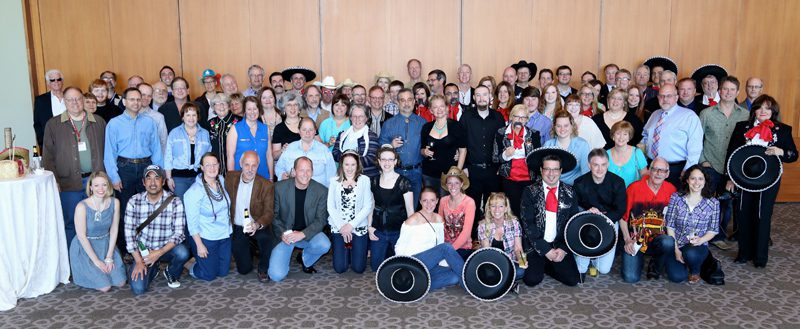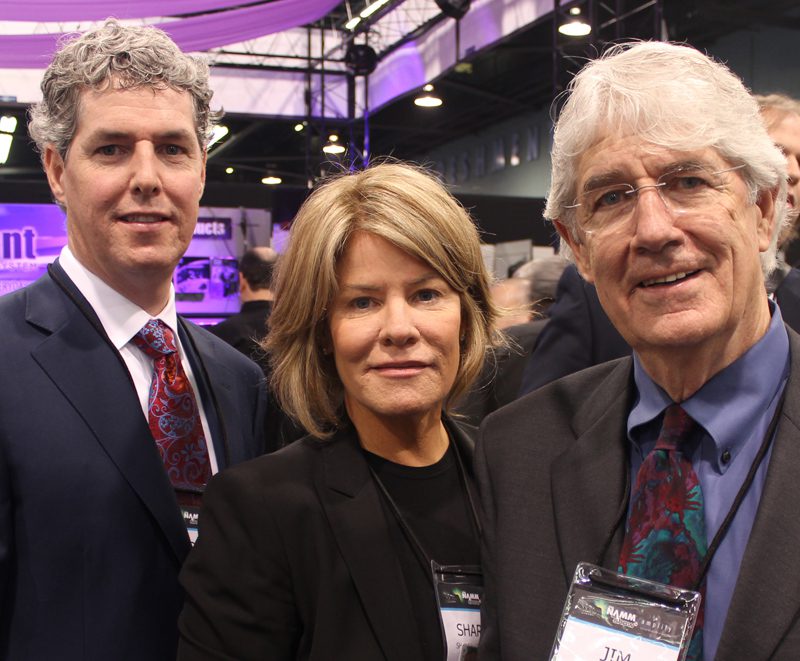 As a core group of print music insiders met in Dallas for the 38th convention of the Retail Print Music Distributors Association (RPMDA) in May, a resilient picture of the embattled industry took shape. In recent years, it has become a given that the print music sector isn’t a place for the faint of heart. The business has been beset by rapidly shifting distribution standards, shrinking school music budgets, and proliferation of free content on the Internet.
As a core group of print music insiders met in Dallas for the 38th convention of the Retail Print Music Distributors Association (RPMDA) in May, a resilient picture of the embattled industry took shape. In recent years, it has become a given that the print music sector isn’t a place for the faint of heart. The business has been beset by rapidly shifting distribution standards, shrinking school music budgets, and proliferation of free content on the Internet.
“This enables our publisher and distributor members to vote and serve on the executive board, thereby increasing the ‘talent pool’ of leadership within RPMDA,” he says. “This will help RPMDA move toward the future with a truly united front.”
But as attendance numbers decrease, the question will persist: is the organization changing fast enough?
Most organizers and attendees are confident, which particularly showed during sessions of group participation and planning. “The energy in the room during these discussions was positively electric,” said new RPMDA president Christie Smith, of Long & McQuade.
YOUNG BLOOD
David Jahnke, Hal Leonard VP of national sales, led a presentation, “Print Leads the Way,” which noted that print sales are down 5.2 percent this year. Similarly, RPMDA attendance was down from 211 attendees last year to 183 this year. Both statistics come with silver linings, though. Despite the drop in sales, Jahnke noted that the print industry has performed more consistently than nearly any other MI segment (after all, musicians of all stripes shop for print product). For the RPMDA’s part, the huge percentage of first-time attendees this year (nearly 25 percent) was a sign of increasing interest from a new generation of professionals.
That new generation is key. Like the rest of the industry, the RPMDA isn’t lacking in legend. This year’s presentation of the group’s highest honor – the Dorothy Award – went to Frank Hackinson, who and signed the Beatles to their first American publishing deal with Hansen Publications and went on to found Columbia Pictures Presentations. It’s an incredible career for the industry to relive, but milestones like that are hard to come by these days.
Which is why the next generation of print is working hard to find teamwork-inspired market solutions. Kate Stewart, a print department manager from Cosmo Music in Ontario, was attending her first show in seven years and noticed an improved collaborative spirit. “The publishers and retailers were much more committed to working together for a common goal,” she said. “In the past, there seemed to be less open communication and flowing of ideas between these two groups.”
KEYS TO SUCCESS
As was apparent throughout the week’s events, sales that were being made were happening as a result of an increasing reliance of innovation, analytics, and a bit of market luck (look no further than the smash success of Hal Leonard’s Frozen publications this year). From sales data to adoption of NAMM inventory standards to inventive ways to game your Facebook page, an ability to master numbers was exalted throughout the show. Long & McQuade print purchasing manager Bob Kohl again teamed with industry accountant Alan Friedman to advocate for tight control over inventory. Hal Leonard district sales manager Tim Cose spoke on his own research finding that the print market skews heavily toward a Long Tail-esque 70/30 rule – that 70 percent of a print department’s sales will consistently come from 30 percent of its inventory.
In general, though, many believe success will come as a direct result of the industry’s response to new challenges. “I think everyone recognizes that the changes within the industry are coming fast and furious, particularly when it comes to digital delivery,” says Rejino. “But what is interesting and telling is the reaction to them. No one has the answer, yet the companies who will be successful choose to look at potential threats as opportunities.”
MOVING AHEAD
There’s no arguing that the print music industry faces unprecedented challenges. While the Music Publishers Association (MPA) is stepping up its efforts to combat piracy or theft, free versions of print pieces do persist. School budget battles require an ever-greater effort to maintain funding for music. And simple marketing strategies continue to baffle many business owners as younger generations quickly switch between media platforms like Facebook, Twitter, and Instagram (“It’s like aiming at a moving target,” noted Cose).
But as always, the show provided ample opportunities for professionals on both sides of the business to huddle up and share ideas. Indeed, one session called on attendees to form small roundtables and present lists of changes for the organization itself, resulting in one of the most robust discussions of the show. “I’d been planning on coming to this show for a long time for all the informational sessions,” said first-time attendee Sharon Pugh of Popplers Music. “But I was surprised by how much information was really exchanged in informal, face-to-face time with everyone else here.”
In an early session on building store brands, Alfred CEO Ron Manus and vice president of sales Antonio Ferranti presented a key piece of advice (“Know what it is that you do best”). That was given against the projected backdrop of a scene from ‘80s comedy Three Amigos in which a small village prepared to defend itself against the powerful outlaw El Guapo. It was a telling choice. As the RPMDA regroups and prepares for next year’s gathering at the Tropicana Hotel in Las Vegas, you have to expect that everyone’s already busy working on that set of skills that they do best.


























Looking Back on 2025: A Year of Controlled Chaos (Emphasis on “Controlled”)